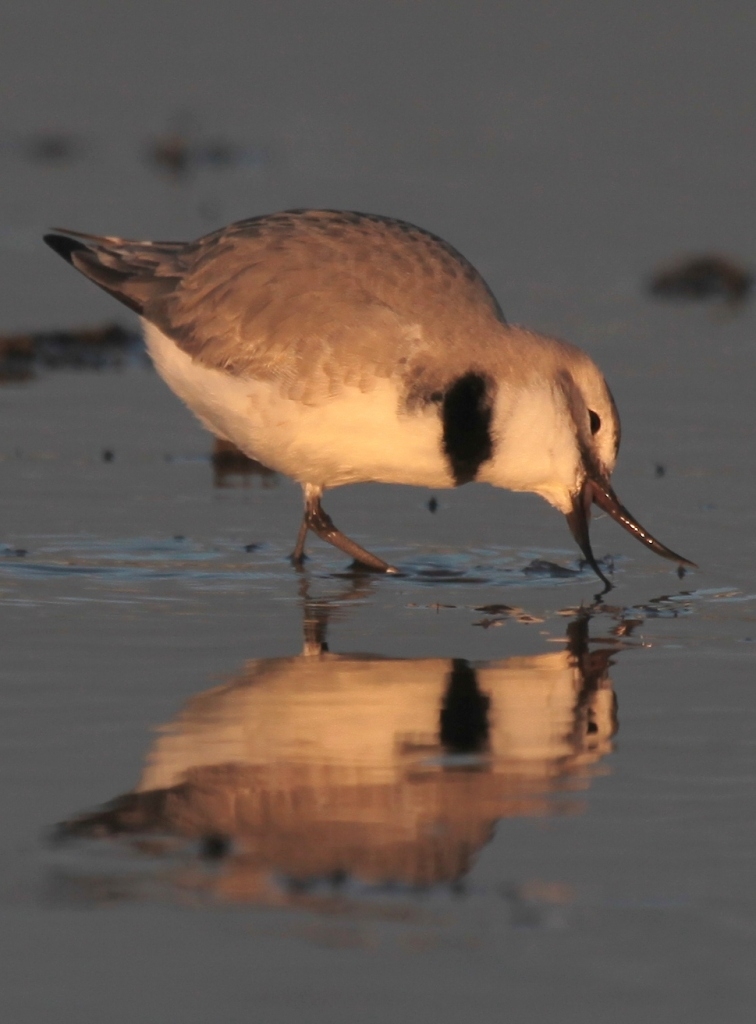Wrybill – wry not!?
Blogger: Forest & Bird’s Conservation Advocate, Nic Vallance
I’m a fan of anything that is just a little quirky, and I have to say that the wrybill or ngutuparore has got the quirk factor all sewn up when it comes to New Zealand birds. It’s the only bird in the word with a bill bent sideways, and almost always to the right.
Nobody’s really nailed down the purpose of the wonky beak, but some seem to think it’s for digging around under river stones to get at it’s favourite food – underwater invertebrates. I’m unsure, that seems like a great adaptation… unless you happen to find a big juicy caddisfly larvae under a rock to your LEFT… which presumably results in much turning in circles to get to it. I’m prepared to be corrected on this though – so if anyone truly knows the reason that wrybills have a bendy beak, I’m all ears.
The wrybill might be a bit non-descript if you’re just going for aesthetics. It doesn’t have the glossy blue-black sheen of a tui, or the bright green feathers of the kakapo. It can’t belt out a series of whistles and chortles like a bellbird, or the haunting melody of the kokako. But what it lacks in melody and frou-frou feathers, it makes up for in being a master of disguise.
Wrybills are expertly coloured for their surroundings. The grey, white and black markings allow it to blend in perfectly with the braided rivers of the eastern South Island where it spends the summers, wading around in the gentle braids, and raising too-cute-for-words tiny grey fluffy chicks in shallow indentations in the riverbed.
However, wrybills are familiar to many North Island residents too, as they frequent inner harbours such as in Auckland and Northland, as well as of course joining the masses of birds that congregate at Miranda, near Thames in the Coromandel.
If you’re lucky enough to chance across a wrybill, stand very still, and it will probably let you view it for a while – albeit at a distance. If you get too close during breeding season, it will either run towards you in an impressive display of guts for a bird not more than 20cm tall, or feign a wing injury, dragging its wing on the ground in an effort to distract you away from any nearby chicks.
You do have to be pretty lucky to see wrybills these days – there are only around 5000 left on the planet. Part of the reason for this is lack of suitable habitat – lowering of river levels creates weed-infested islands in the braided rivers, which leave less room for the wrybills to breed, and more places for predators such as stoats and cats and hedgehogs to hide.
Our beautiful Mackenzie Country, is home to 15% of the wrybill population, which is all the more reason we must protect it from intensive development – so that native wildlife like the threatened wrybill can have a place to live.
The wrybill might not enjoy the profile that a kiwi does, but the more you learn about these quirky characters, the more they endear themselves to you. Vote WRYBILL, WRY NOT!?

